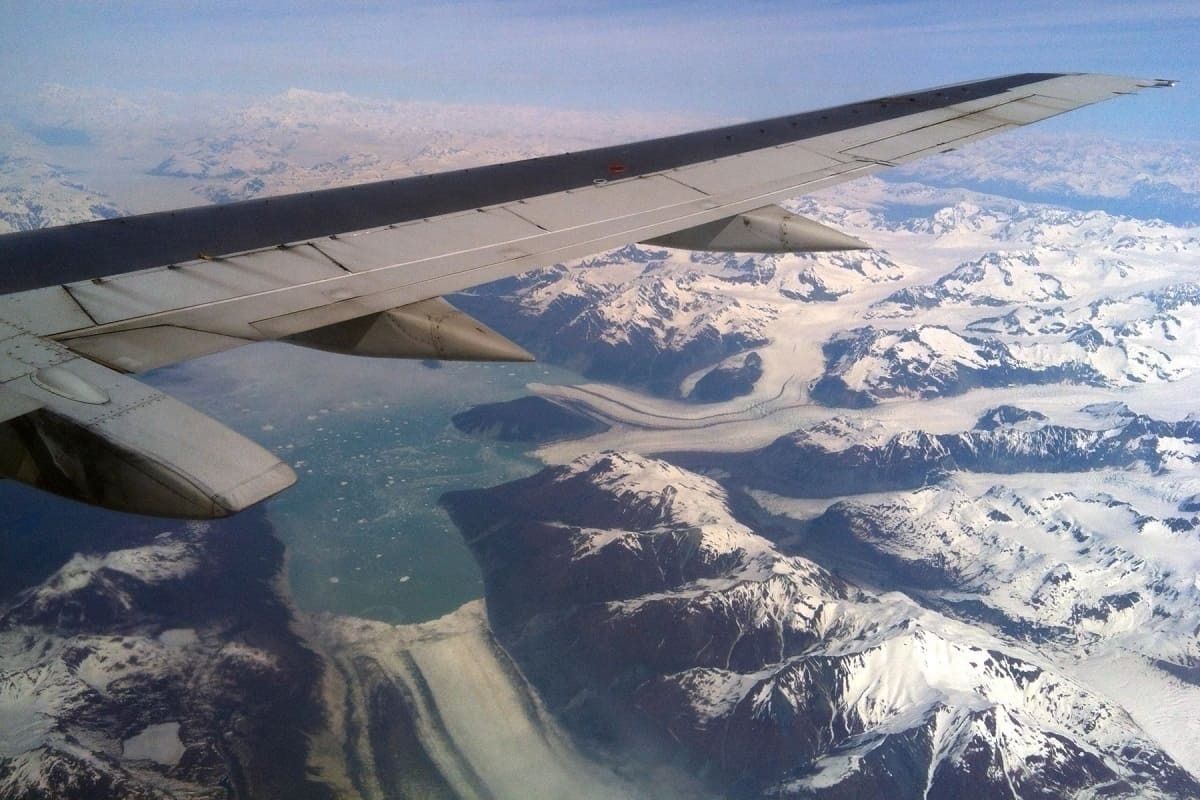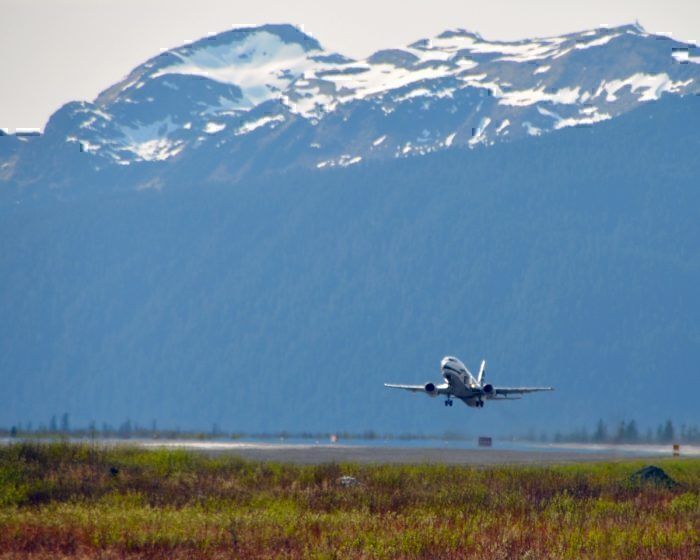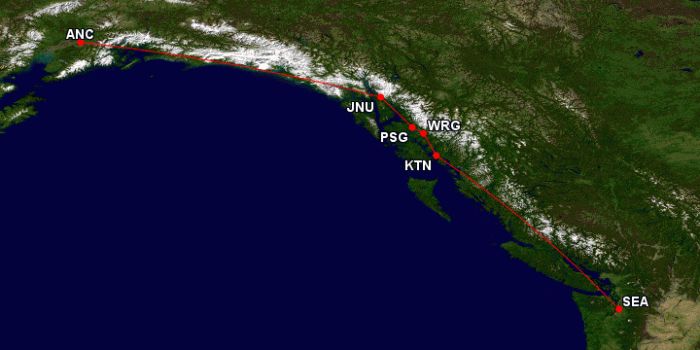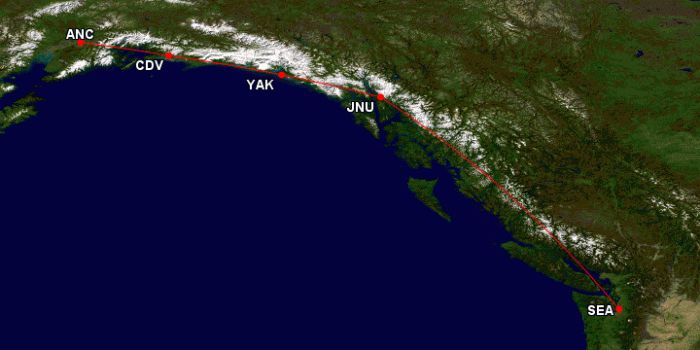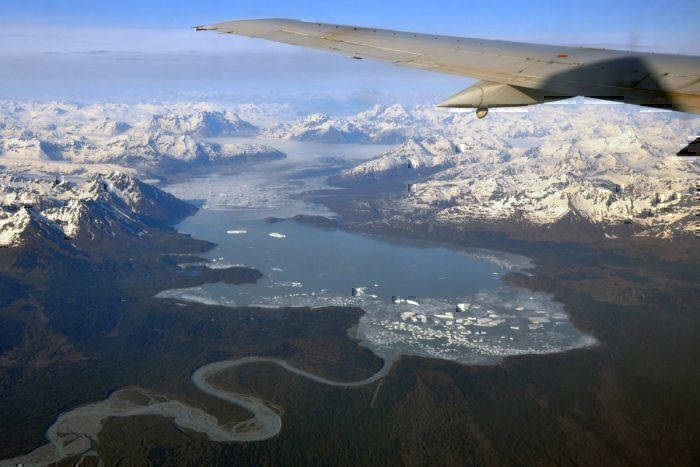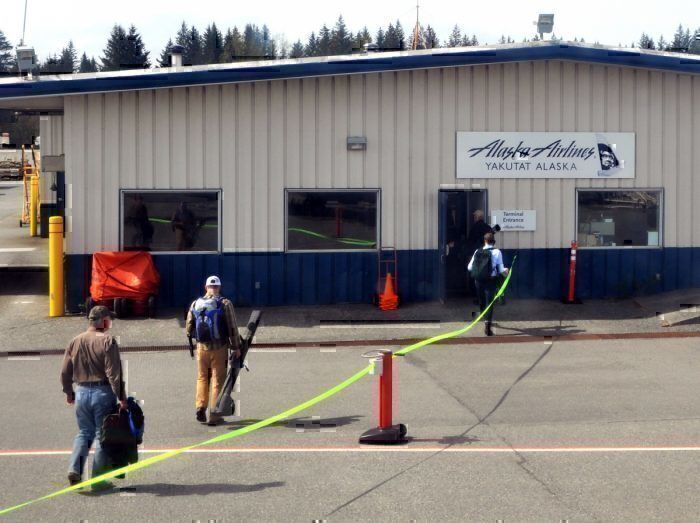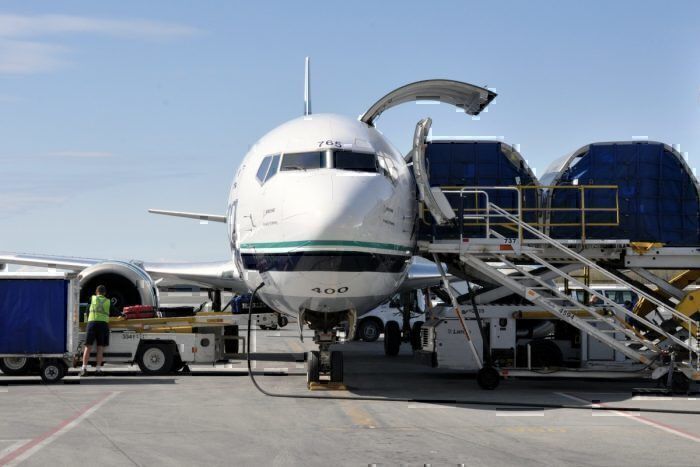Sometimes it’s great to fly just for the sake of flying. A handful of airlines operate some unusual and iconic routes which are genuine bucket list items for many of us. One such airline is Alaska Airlines, which operates a service that totally puts the ooo in route. Here’s what you need to know about the Milk Run.
What is the Milk Run?
Perhaps one of the world’s most unique flight routes, the ‘Milk Run’ is the name given to a daily hop around the towns of Southeast Alaska by incumbent carrier Alaska Airlines. This strange flight path provides essential connectivity to these remote communities, who often find themselves with no other means of transportation.
The name itself reflects the historical function of Alaska Airlines as a vital supply chain enabler. Dubbed as such back in the 1930s, the route was the only way to provide these outlying communities with critical items such as medicine, mail and, of course, milk.
In fact, the term ‘Milk Run’ doesn’t describe just one flight route, but in fact a collection of routes that operate these essential hops. Just as the milkman delivers full bottles at the same time as he picks up the empties, so Alaska Airlines made its bread and butter picking up loads in one place and delivering them somewhere else.
Milk Run routes
One such Milk Run route is Alaska Airlines flight 65. This flight begins in Seattle and heads to Anchorage, stopping at various points along the route. Before landing in Anchorage, the flight passes through Ketchikan, Wrangell, Petersburg and Juneau.
Another Milk Run flight is ASA66. This one begins in Anchorage, stopping in Cordova, Yakutat and Juneau before finishing in Seattle.
As a passenger on one of these flights, you can be sure to be treated to some of the best scenery in Alaska. The airline describes the views as “a rugged coastline, where jagged peaks rise from the sea and blue-ice glaciers flow back down”.
Two flight attendants commented on working the Milk Run flights, both of whom were highly complimentary about the experience. Sharon Hill, a flight attendant for more than three decades who has worked the Milk Run for most of her career, said,
“This is the original Alaska Airlines … This is old school – it’s like back in the day, when we were small.”
Fellow flight attendant, Lynn Thoreson, also in the business for more than three decades, described the flights, saying,
“These are the flights that built Alaska Airlines. The scenery is beautiful and the people are wonderful. I wouldn’t want to fly anywhere else.”
Arriving at a Milk Run airport is like nothing most North Americans have experienced before. Airports are small and functional, lacking in restaurants and certainly without lavish lounges. The lack of long TSA lines is punctuated by the utilitarian boarding process – air stairs are the norm; there’s no jetway here.
The 737-400 Combi
Traditionally, for all the Milk Run routes, Alaska Airlines used a fleet of five Boeing 737-400 Combi aircraft. This allowed it to maximize the cargo carrying capacity on the run, while also still leaving room for a decent number of passengers. All in, 72 seats were found at the back of these planes.
However, Alaska retired the last of its 737-400 Combis in 2017, replacing them with a fleet of 737-700s. Some are configured purely for freight, while others are wholly passenger planes.
While most goods carried are fairly unremarkable, the flight attendants noted some strange deliveries over the years they’ve worked on the route. One said she’d experience a Toyota truck being loaded onto the plane, as well as a horse complete with its own vet. The other recalled an experience with three reindeer, and another involving a baby walrus.
“The walrus kept belching and it smelled like fish.”
Alaska Airlines operates around 20 flights per day between Seattle and Anchorage, but only a few are true Milk Run flights. If you're keen to hop on a Milk Run trip, keep an eye out for Alaska Airlines flight numbers 61, 62 and 64 through 67.
Have you ever flown the Alaska Airlines Milk Run? Let us know in the comments.

